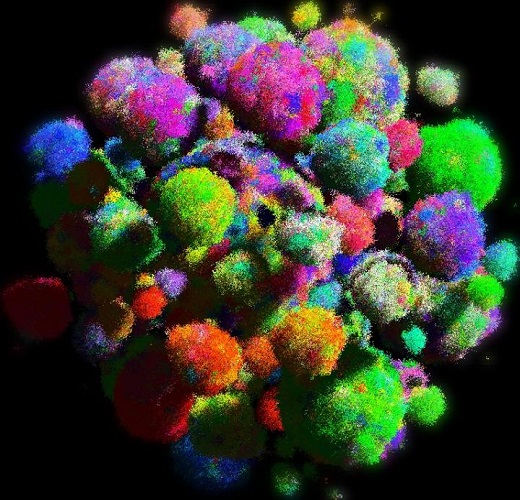BIOLOGY
3D cancer models give fresh perspective on disease

Supercomputer models of developing cancers reveal how tiny movements of cells can quickly transform the makeup of an entire tumour.
The models reinforce laboratory studies of how tumours evolve and spread, and why patients can respond well to therapy, only to relapse later.
Researchers used mathematical algorithms to create three-dimensional simulations of cancers developing over time. They studied how tumours begin with one rogue cell which multiplies to become a malignant mass containing many billions of cells.
Their models took into account changes that occur in cancerous cells as they move within the landscape of a tumour, and as they replicate or die. They also considered genetic variation, which makes some cells more suited to the environment of a tumour than others.
They found that movement and turnover of cells in a tumour allows those that are well suited to the environment to flourish. Any one of these can take over an existing tumour, replacing the original mass with new cells quickly - often within several months.
This helps explain why tumours are comprised mostly of one type of cell, whereas healthy tissue tends to be made up of a mixture of cell types.
However, this mechanism does not entirely mix the cells inside the tumour, the team say. This can lead to parts of the tumour becoming immune to certain drugs, which enables them to resist chemotherapy treatment. Those cells that are not killed off by treatment can quickly flourish and repopulate the tumour as it regrows. Researchers say treatments that target small movements of cancerous cells could help to slow progress of the disease.
The study, a collaboration between the University of Edinburgh, Harvard University and Johns Hopkins University, is published in the journal Nature. The research was supported by the Leverhulme Trust and The Royal Society of Edinburgh.
Dr Bartlomiej Waclaw, of the University of Edinburgh's School of Physics and Astronomy, who is the lead author of the study, said: "Computer modelling of cancer enables us to gain valuable insight into how this complex disease develops over time and in three dimensions."
